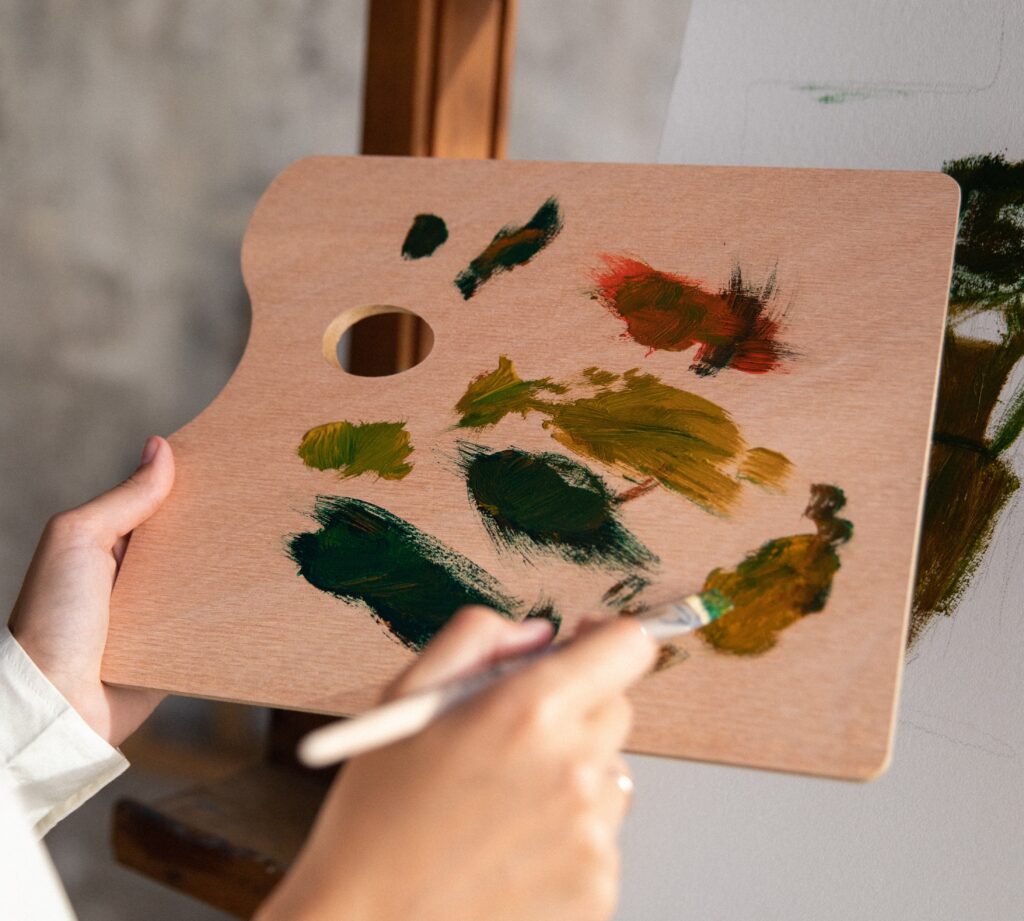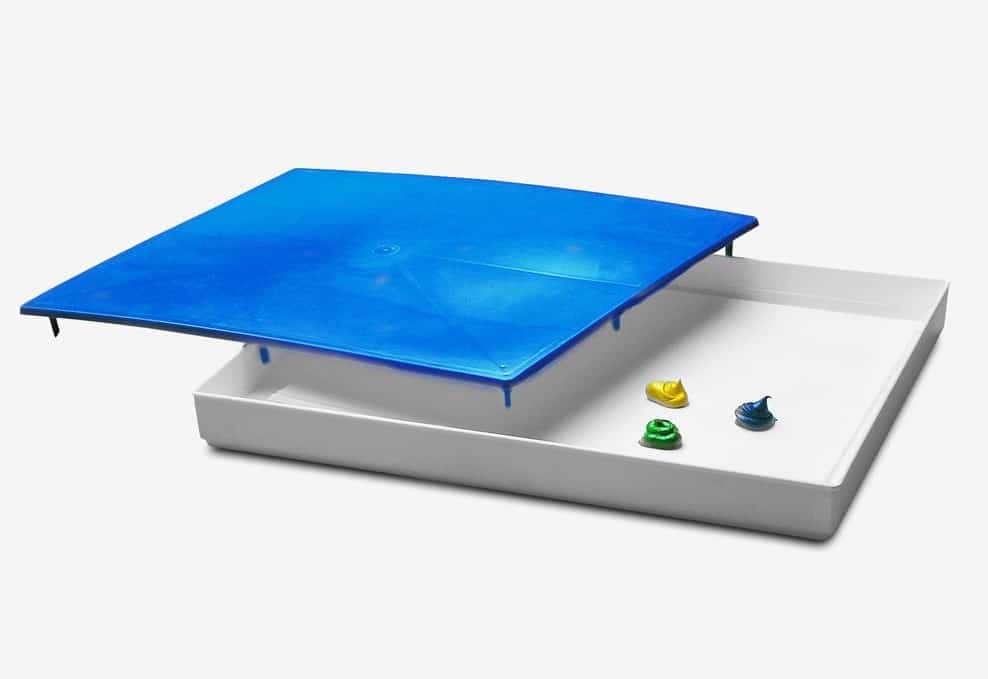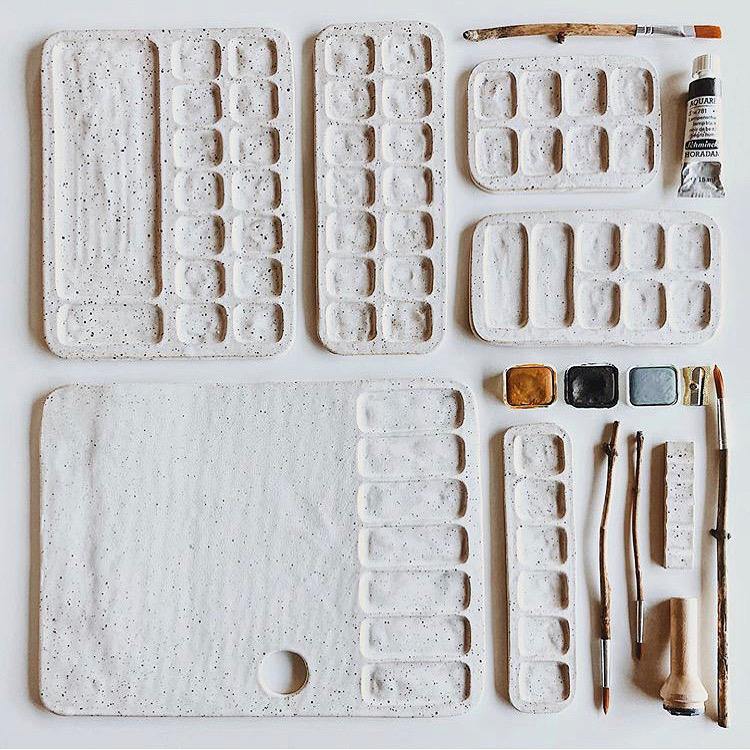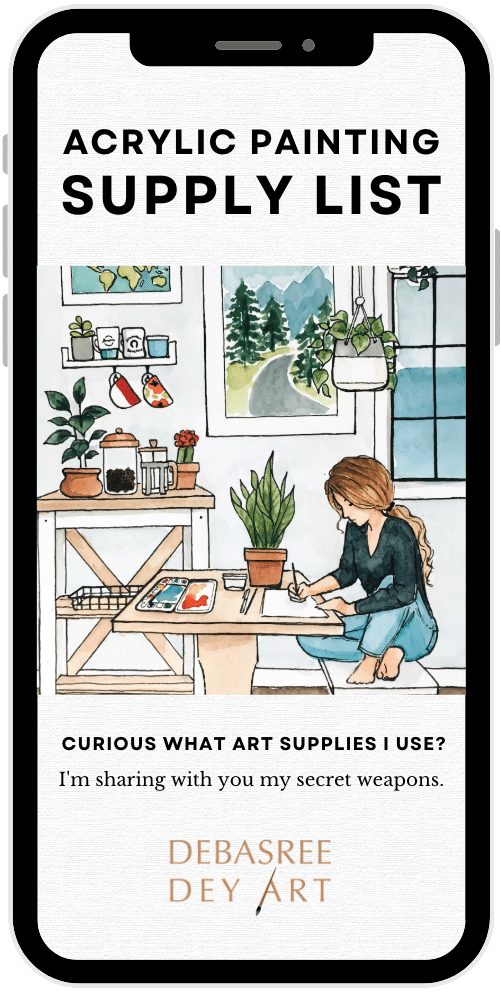Let’s talk about acrylic palettes, one of the all-important tools for painting.
A palette serves as the artist’s mixing hub, where colors blend, harmonize, and come to life. Choosing the right palette is crucial for ensuring a smooth and enjoyable painting process.
With a myriad of options available, it’s essential to understand the different types of palettes, their features, and how they can enhance your artistic journey.
In this blog post, we will explore various artist palettes, their advantages, and help you find the perfect palette for your needs.
So let’s dive in and discover the palette that will become your trusty companion on your artistic explorations.
1. Traditional Wooden Palette

A traditional wooden palette offers a classic and natural feel to your painting process. It provides a sturdy and dependable surface for mixing paints.
Wooden palettes often have a thumb hole for easy handling and are spacious enough for ample paint mixing. They are easy to clean, and the wooden surface allows for easy removal of dried paint.
The earthy texture of the wood can also add a tactile and organic element to your painting experience.
2. Glass Palette

A glass palette offers a sleek and non-porous surface that allows for easy cleanup and color visibility. The smooth glass surface is ideal for mixing acrylic paints as it prevents paint from seeping into the palette, making it easy to remove and clean.
Glass palettes are also durable and provide a stable base for working with acrylic paints. The transparency of the glass allows you to see the true colors of your paints, enabling accurate color mixing.
3. Disposable Paper Palette

Disposable paper palettes are an excellent choice for beginners. They are affordable, convenient, and easy to use.
These palettes come in pad form with tear-off sheets, providing a fresh mixing surface for each painting session.
Disposable paper palettes are lightweight and portable, making them ideal for plein air painting or when you’re on the go.
They are also easy to dispose of, eliminating the need for cleanup, and allowing you to focus on your painting.
4. Stay-Wet Palette

A stay-wet palette is a valuable tool for beginners. It features a special membrane or sponge that keeps the paints moist and workable for longer periods. This prevents the paints from drying out quickly, allowing you to work at your own pace.
Stay-wet palettes are great for acrylic paints, which tend to dry quickly.
They are spacious enough for paint mixing, and the moist environment helps preserve the freshness of the paints, reducing waste and ensuring you have more time to work with them.
5. Ceramic Palette

Ceramic palettes offer a durable and smooth surface for paint mixing. They are easy to clean and provide a stable base for working with acrylic paints.
Ceramic palettes come in various shapes and sizes, allowing you to choose one that suits your preferences and painting style.
The ceramic material does not absorb paint, making it easy to remove and clean dried paint. The smooth surface of a ceramic palette allows for effortless paint mixing and color blending.
6. Temporary Makeshift Palette
In some cases, artists may need to create a temporary makeshift palette when they don’t have access to traditional palettes.
This can include using a clean ceramic tile, a glass or plastic plate, or even a piece of wax paper.
While these options may not provide the same stability or longevity as dedicated palettes, they can serve as a practical solution in a pinch.
It’s important to ensure that the surface is clean and non-absorbent, allowing for easy paint mixing and cleanup.
Get my exact supply list for acrylic paintings, with helpful color mixing tips that you can start implementing right away!
When choosing a painting palette, consider factors such as your painting style, preferences for surface texture, ease of cleanup, and the type of paint you use. Each type of palette has its own benefits, so it’s important to choose the one that suits your needs and enhances your painting experience.
Remember, the best palette is the one that allows you to comfortably mix and work with your paints, making your creative process enjoyable and efficient.
Do you have a preferred type of painting palette?
Share your thoughts and experiences in the comments below!






